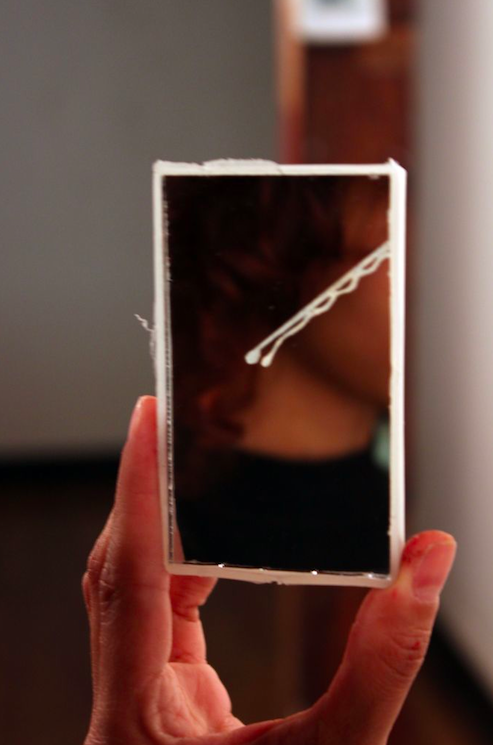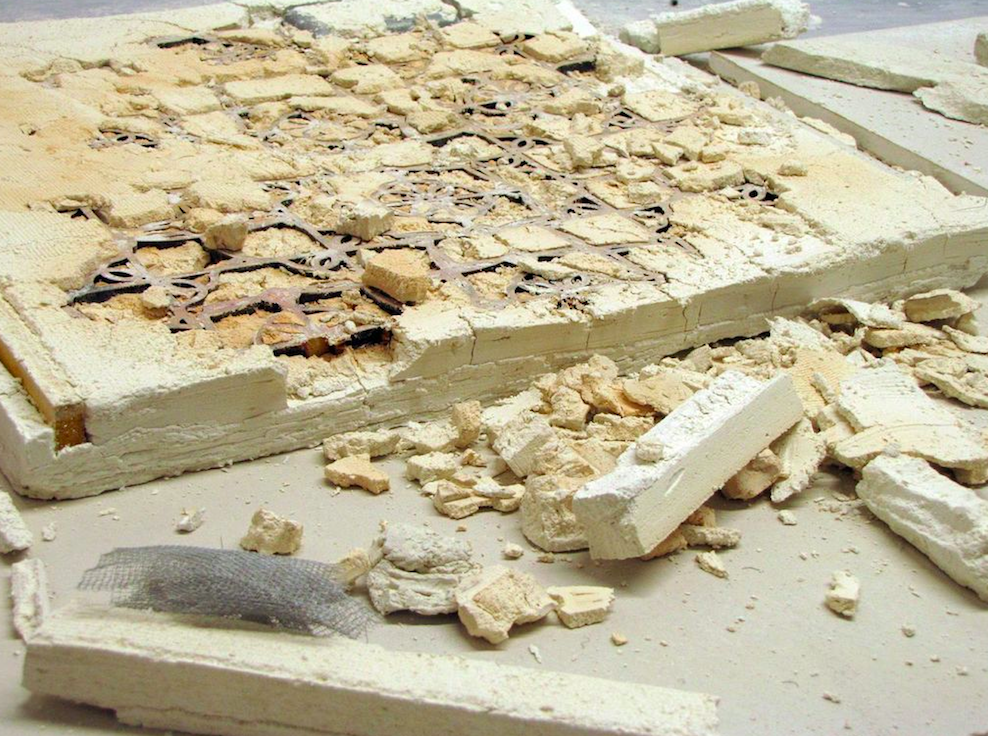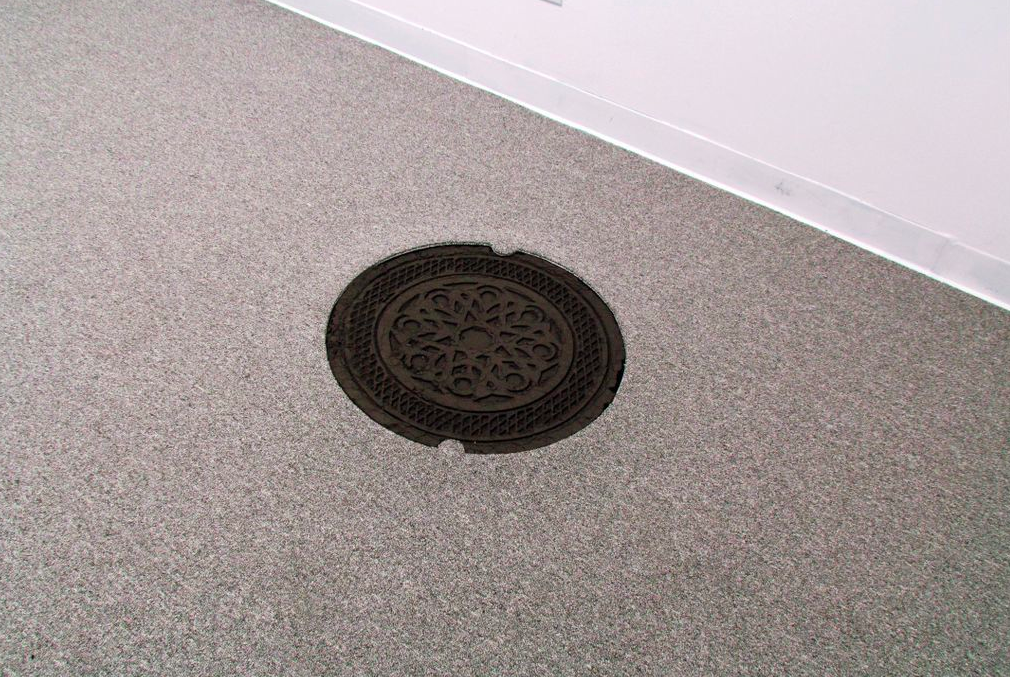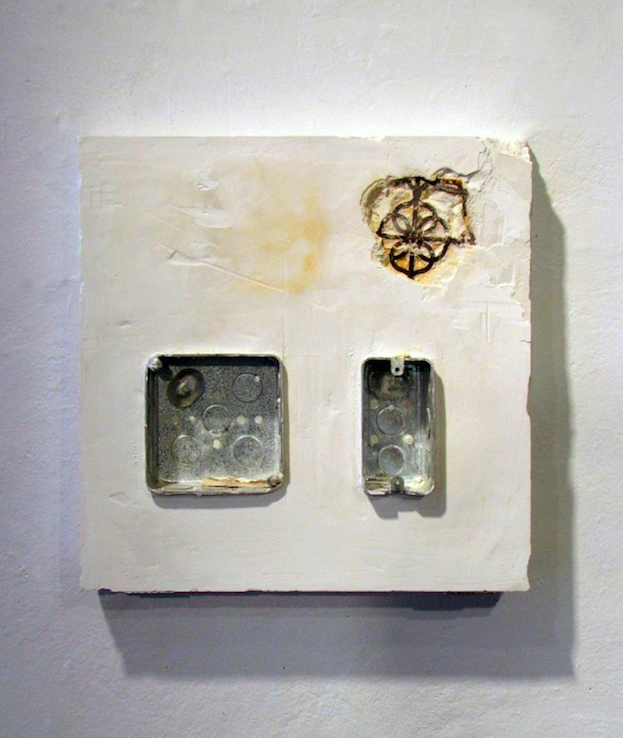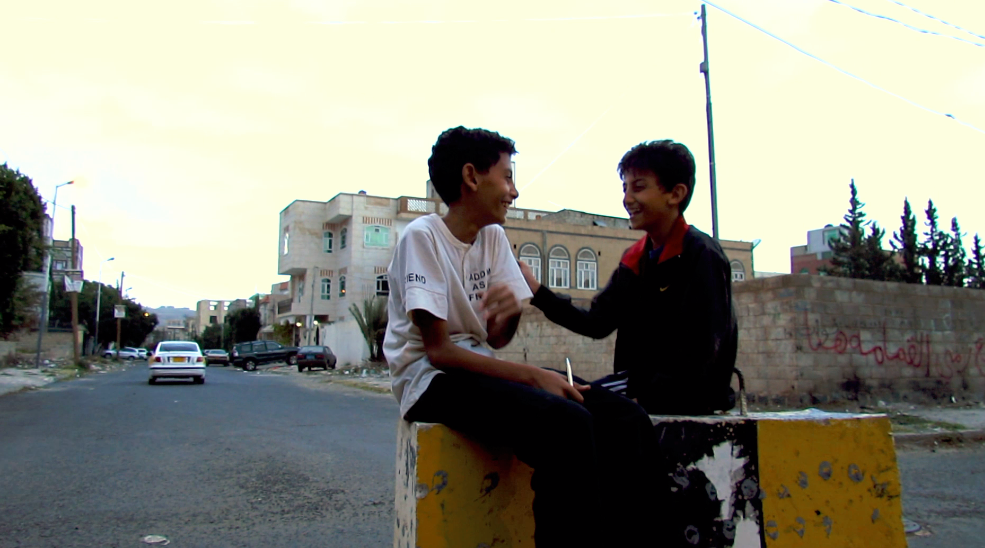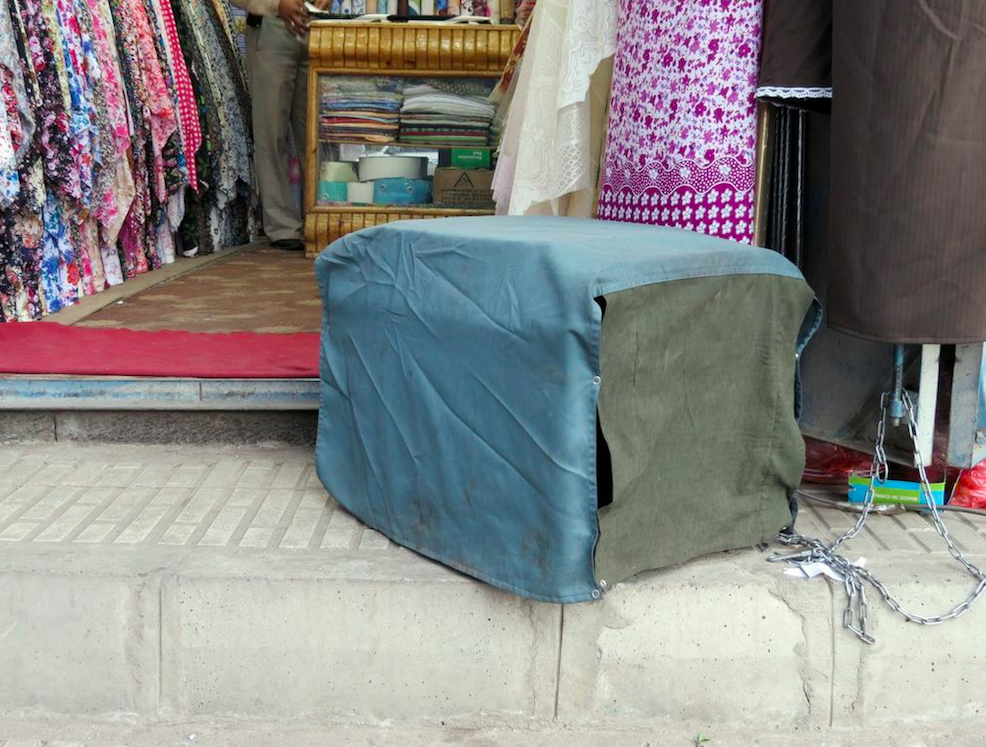Two metaphors, both equally decrepit, are alternately deployed in discussions of “place” in the Gulf Arab states: on the one hand, the notion of a tabula rasa, and, on the other hand, an attachment to a codified narrative of historical and cultural sitedness. Rem Koolhaas exemplified the former stance in his pronouncement in 2007 that the topography along the Persian Gulf provides “the final tabula rasa on which new identities can be inscribed: palms, world maps, cultural capital, and financial centers.”[i] The latter attitude is conveyed by al-Manakh, the self-described inaugural guide to architecture and urbanism in the Gulf, which distinguishes Sharjah by its “authenticity” as a modern Islamic city.[ii] This characterization is linked to the ways that Sharjah has presciently and consistently invoked culture—encompassing everything from archaeology to “traditional” building methods and contemporary art—as its defining attribute. But what does it really mean to call Sharjah an “authentic” city?
The sense of place in the Middle East is often described as shaped by deterritorialization, or what Aamir Mufti has called a “dialectic of rooting and uprooting.”[iii] These sensibilities have, in turn, been deployed in contemporary art practice. The way place is described in the United Arab Emirates, however, is slightly different, in part because the country has not been as affected by conflict, and the consequent widespread relocation, as has much of the broader region. Yet historically, the movements of people have shaped the cultural identity of the Emirates: those involved in the pearling industry and trade routes throughout the Gulf, and in more recent years, by an influx of foreign workers. The enormous numbers of people who temporarily live, work, and move through the region has only intensified with the stunning pace of development following the discovery of oil there in the mid-twentieth century (and not until 1972 in Sharjah), which transformed formerly rural and coastal trading communities into urban hubs of commerce and tourism. The rhetoric of deterritorialization seems less urgent when economic demands, rather than conflict, are largely shaping the large-scale circulation of people. Indeed, official cultural initiatives in the Emirates appear more concerned with instantiating a sense of place than with overtly addressing dispossession. Yet might this preoccupation with place be just another form of addressing these same issues of dispossession and uprooting?
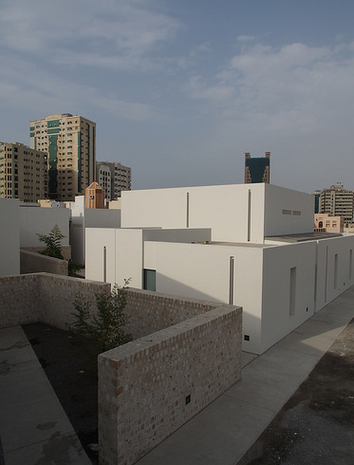
[Fig. 1: Sharjah Art Foundation. Photo by Andrew Ruff.]
One particular mode of cultural production in Sharjah today explicitly examines this question of “authentic” place making: annual site-specific art projects commissioned by the Sharjah Art Foundation (SAF). SAF, established in 2009, is far from the only institution in the region to sponsor such a program,[iv] but what sets it apart is the explicit mandate that the international artists must respond to the local environment of Sharjah [fig. 1]. It seems a rather surprising move for a national body to commission foreign artists to comment specifically on “place,” particularly since a parallel discourse of “authenticity” and “specificity” accompanies the mandate. The political underpinnings of this decision may perhaps be located in a rather bald attempt to implicate the culture of Sharjah within a broader global constellation, at least in the sphere of contemporary art. Yet we might also think about these commissions as part of a broader impulse on the part of the Emirates to solidify a sense of authenticity and specificity that is always already premised on circulation, and a persistent tension between “inside” and “outside.” For what does it really mean to talk about “place” in our contemporary context, marked as it is by the velocity of circulating information, images, products, and people, both virtual and actual?
In the spring of 2013, the Danish artistic collective SUPERFLEX created a public art installation on Bank Street in Sharjah, just a few blocks from the heritage area that is home to the SAF, which commissioned the project [fig. 2].
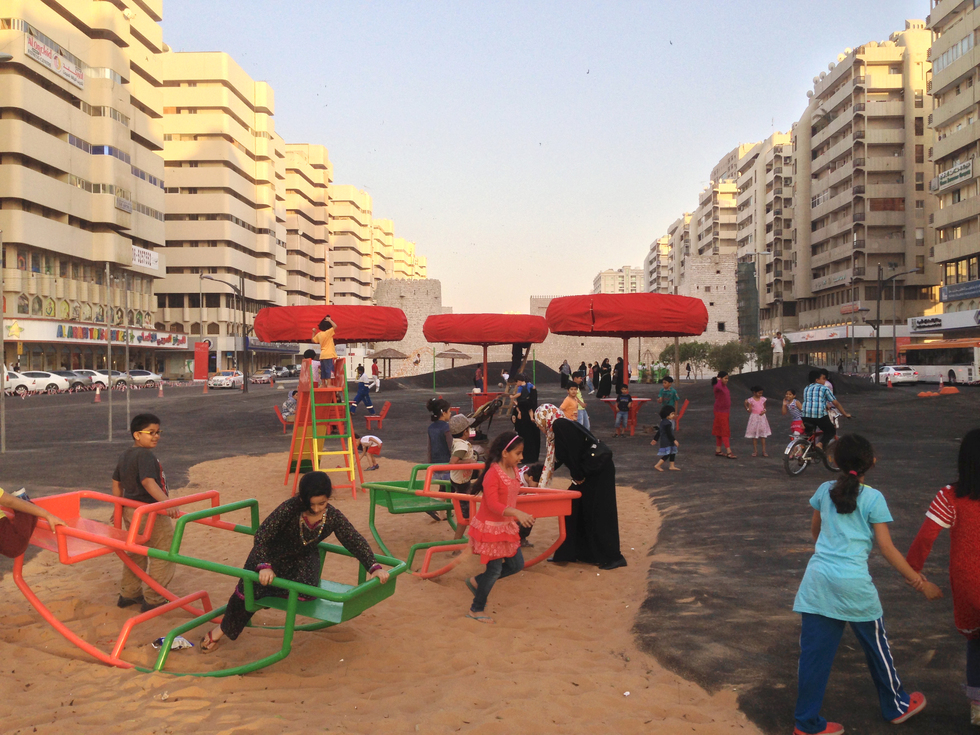
[Fig 2. SUPERFLEX, The Bank, installation view at Sharjah Biennial 11, March 2013. Photo: SUPERFLEX.]
Many of the banks originally located on this street have in recent years relocated to more affluent neighborhoods, leaving the once-vibrant thoroughfare vacant. SUPERFLEX imagined replacing the defunct monetary model of exchange with a relational model intended to engage the local population and reactivate this stretch of the city. A written survey asked local residents, most of whom are originally from South and Southeast Asia, to nominate public objects like benches, trees, and signage from their countries of origin or other places in which they had lived or traveled[v] [fig. 3]. The selected items were then purchased, or produced, and installed on the median. This installation engages the particular societal fabric of Sharjah, made visible vis-à-vis acts of transposition that affirm the local experience of life in the city.
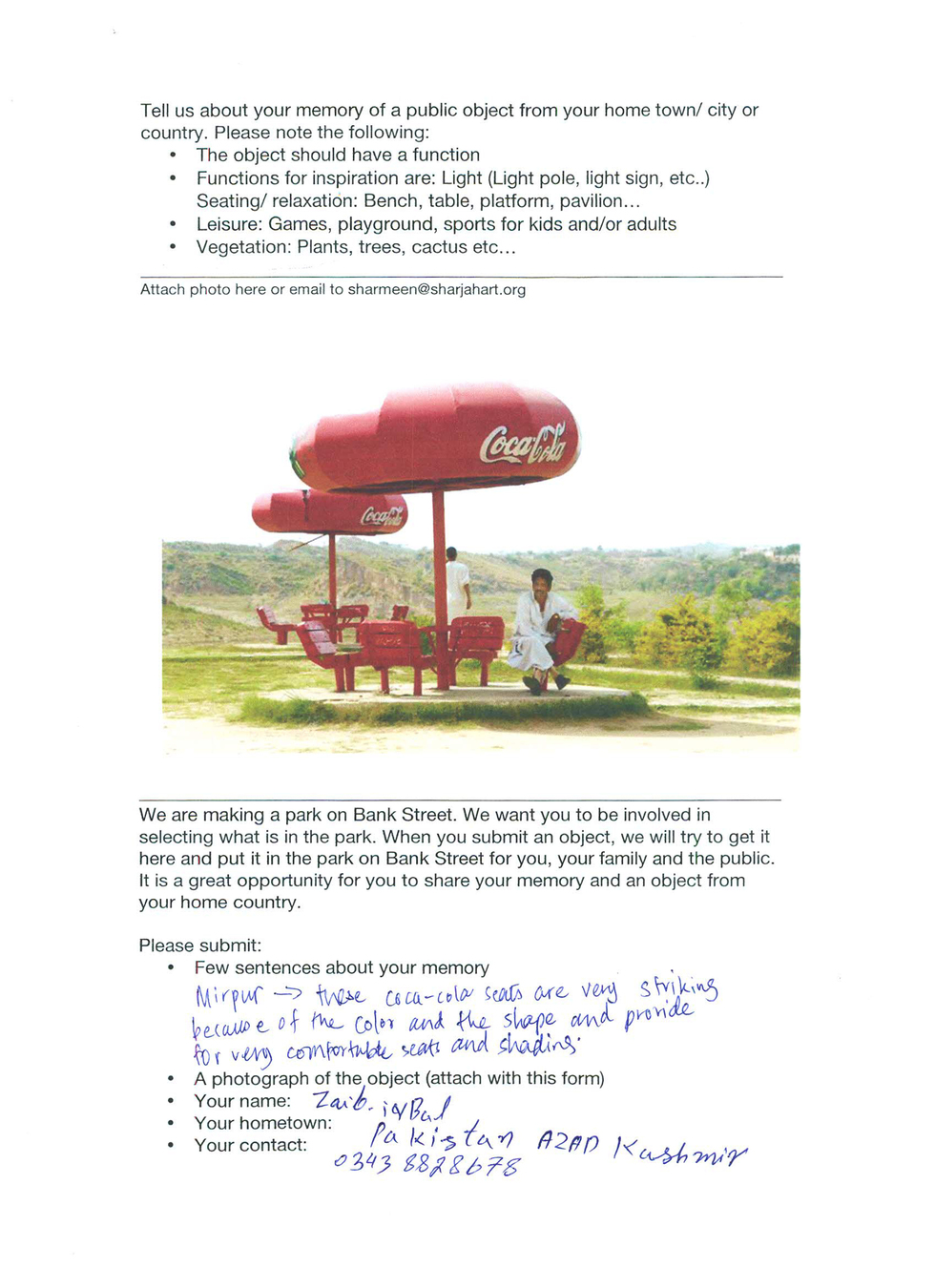
[Fig. 3. Survey filled out by Sharjah resident in preparation for SUPERFLEX’s installation The Bank, 2013. Photo: SUPERFLEX.]
TJ Demos has argued that earlier approaches to site specificity moored the art object to a particular location—as exemplified in the post-minimalist practices of US artists Richard Serra and Robert Smithson—but that since the 1990s, this affinity has been eclipsed by a formulation of sitedness in and as deterritorialization.[vi] Under Standing Over Views, a 2009 installation by the Tunisian-born, Berlin-based artist Nadia Kaabi Linke (b. 1978) manifested this shift [fig. 4]. This hanging map is comprised of slivers of paint collected from walls in Tunis, Bizerte, Kairouan, Paris, Berlin, Venice, Kiev, and Cologne. Each paint shard is individually suspended from a black silk string [fig. 5]. Taken as a whole, they form a map of the Emirates. Kaabi Linke activates a literal suspension of place: the landscape is no longer the ground beneath our feet, but rather a surreal structure suspended above. A secondary dislocation is at work as well, for the shadows cast on the floor and wall act to mirror the transposition of the paint removed from its original context. Moreover, the individual paint slivers are not denoted by point of origin. Instead, the various countries and regions are rendered, in some material sense, inseparable. The constituent parts are here subsumed under the format—and the symbol—of the Emirates as a structuring principle.
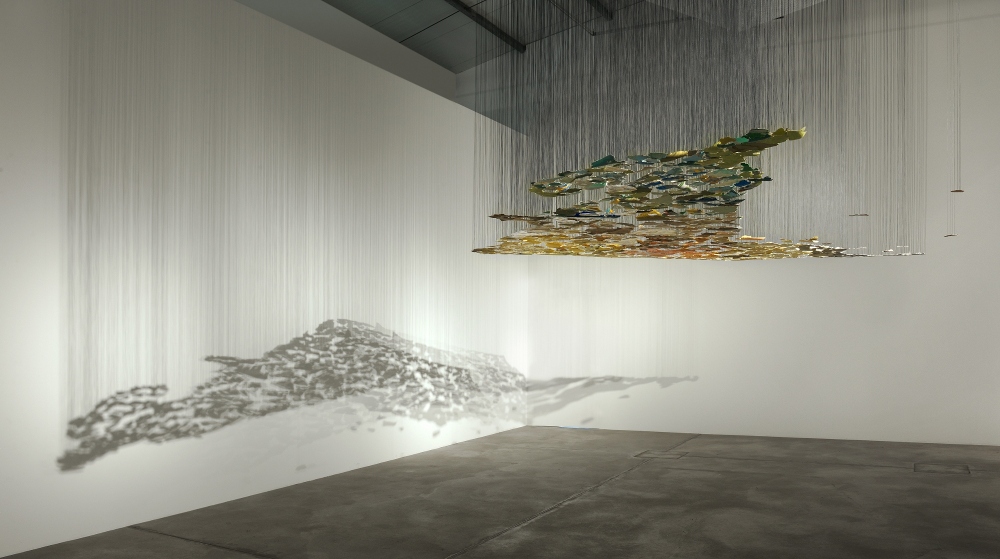
[Fig. 4]
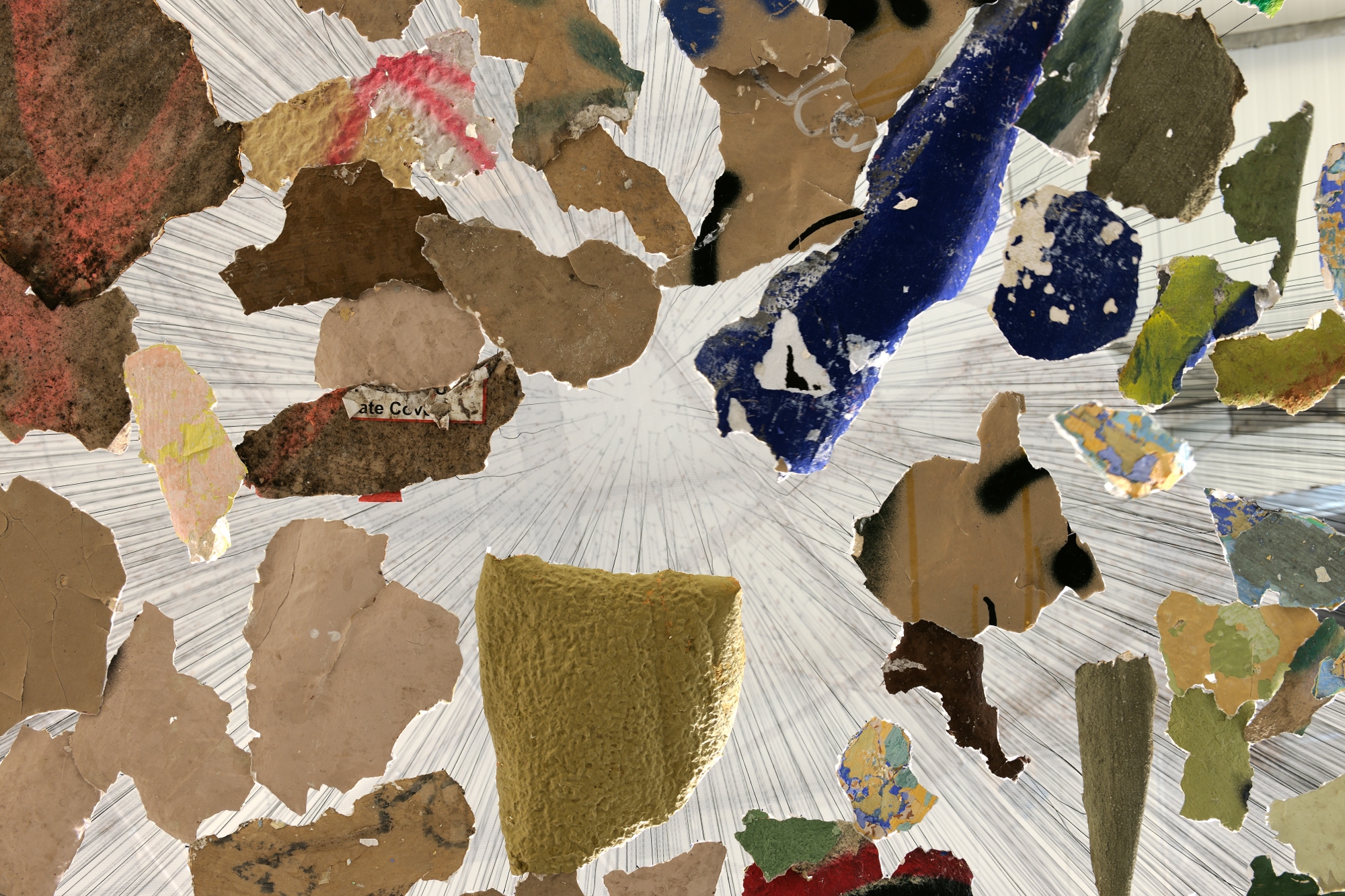
[Fig. 5]
[Figs. 4–5. Nadia Kaabi Linke, Under Standing Over Views, 2009. Installation views at Sharjah Contemporary Arab Art Museum. Photo: Alfredo Rubio. Courtesy Nadia Kaabi Linke.]
One could parse various sociopolitical currents, perhaps reading the piece as a comment on the flow of Sharjah’s population. The circulation of oil rents as capital is reshaping both the material and symbolic sense of place in the Emirates, generating new urban construction projects as well as determining the social and cultural texture of the city. Sharjah today is shaped by the way property markets—spurred by oil rents—are reorienting urban space. The peeling paint of Under Standing Over Views may evoke the planned displacement of local residents from several 1970s-era apartment blocks that surround the SAF heritage area. The buildings have been slated for demolition to make way for landscaped pedestrian routes through downtown, part of “The Heart of Sharjah,” an urban renewal plan initiated in 2012. Michelle Buckley describes the typical narrative of development in the Emirates, specifically in Dubai, as a tale of division: governmental efforts to engineer an urban scape for an affluent population, over and against the exploitative treatment and conditions of the poorer, largely foreign, workforce. Yet Buckley wants to complicate this polarizing narrative. She suggests that the autocratic neoliberalism at work in Dubai and Sharjah are in fact more complex, and are challenged and shaped by fragmentary labor politics, including demonstrations and mass-worker households.[vii]
The relationship between the flow of capital and that of bodies, alluded to in Under Standing Over Views, is more explicitly examined in SUPERFLEX’s project. Oil rents attract foreign laborers, who directly construct the new urban and commercial built environment, and who also sustain the economic infrastructure of a city like Sharjah by providing other necessary services. The Bank Street installation points to some of the ways in which the local cultural context is infused with new influences via the circulation of both capital and human labor. At the same time, the work calls into question the very notion of what constitutes place: a spatial configuration or locality, or temporal experience and memory? Both installations transpose fragmentary traces of other places, pasts, and memories, and explore this transposition as an important aspect of how the works speak to the specificity of Sharjah.
British artist Carey Young plays with reinvesting place with lived and temporal experience in a 2007 photographic project, Body Techniques, created during a residency at the Sharjah Biennial that year.[viii] Each photograph in this series of eight documents a restaging of a performance piece from the international conceptual canon, ranging from works by Valie Export to Richard Long and Bruce Nauman [figs. 6–7].
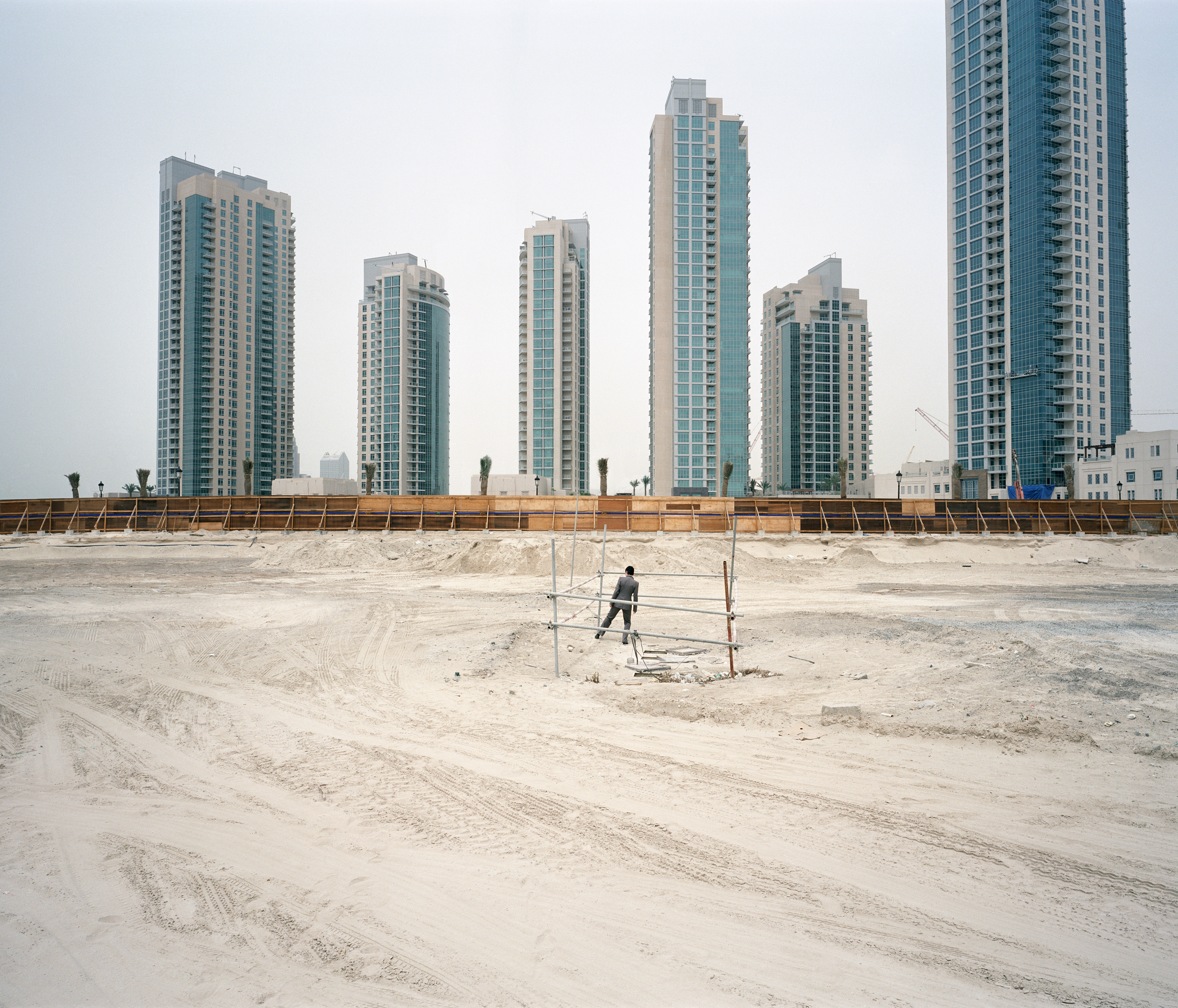
[Fig. 6]
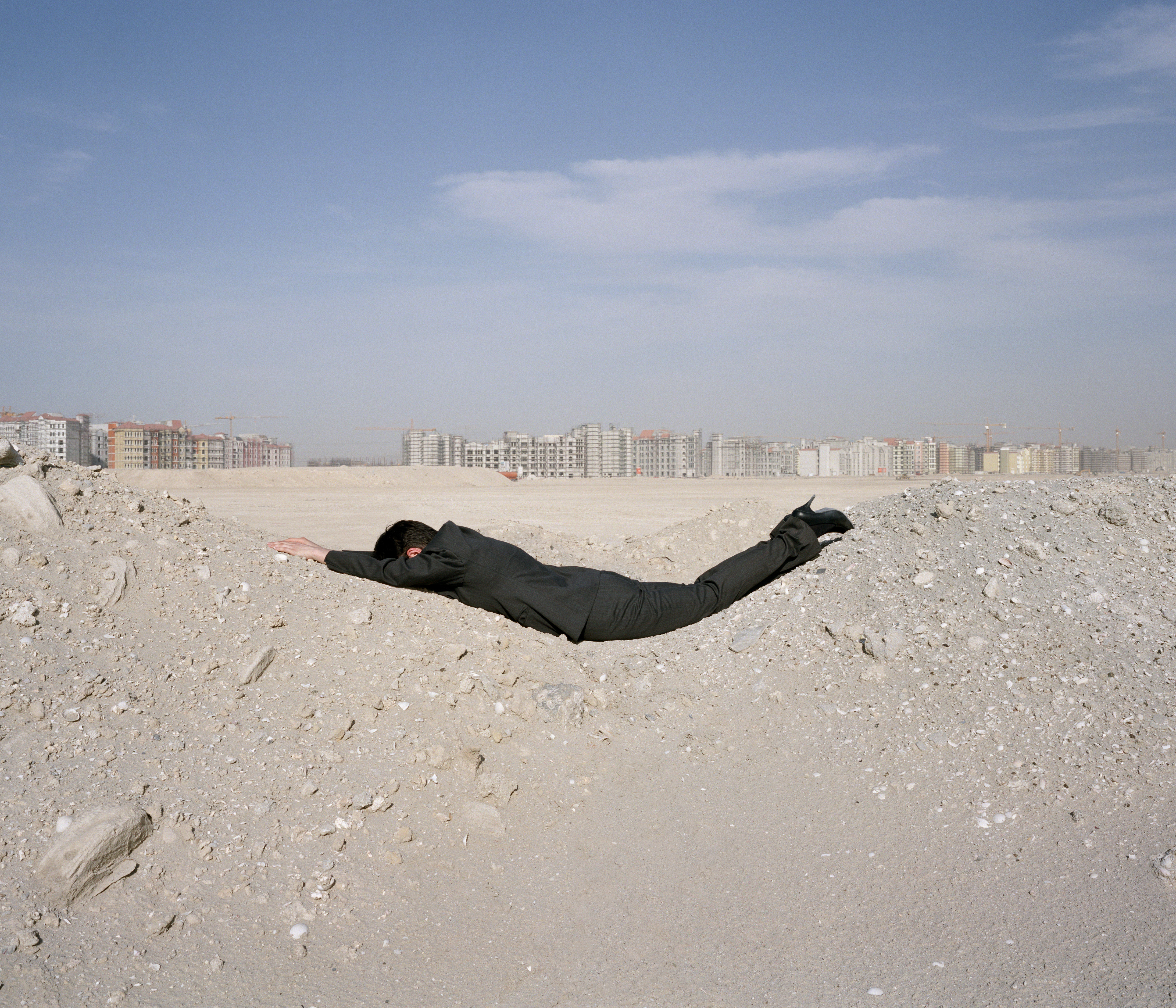
[Fig. 7]
[Figs. 6–7. Carey Young, Body Techniques (after Dance or Exercise on the Perimeter of a Square [Square Dance], Bruce Nauman, 1967–68), 2007, and Body Techniques (after Parallel Stress, Dennis Oppenheim, 1970), 2007. Produced as part of a Sharjah Biennial Artist in Residence Program, 2007. Photos © Carey Young. Courtesy Paula Cooper Gallery, New York.]
The original performances share a number of threads running through artistic experimentation in the 1970s: the elimination of the object, the centrality of the artist’s body, durational practices, conceptualism, earth art, and tactics of installation. These tactics were intended to challenge and animate the territorial boundaries between such well-rehearsed dichotomies as artist and viewer, body and mind, nature and built environment, life and art. Art making in the 1970s was also beginning to seep beyond the spaces of the studio, gallery, and museum, moving into the sphere of everyday life.
Young relocates a specific legacy of artistic practice to the contemporary landscape—literal and metaphorical—of the Gulf, thereby unsettling standard binaries of East and West, just as SUPERFLEX’s The Bank transfigures a site of commercial capital into an environment for transcultural interchange. Yet the fact remains—it is capital that brings these bodies to Sharjah and indebts them to the economic system and workforce. In Body Techniques, Young ambiguously inserts a body uneasily amid building sites in Sharjah, Dubai, and the surrounding desert landscape. A visual discordance persists between the natural desert landscape and the sleek, modern structures, which are in varying states of completion. Moreover, the artist’s body—the identity of which has been effaced through distance and positioning or concealed with clothing—emerges as isolated within the constructed and constructive landscape. It is never clear whether she molds herself into this environment, or marks and resists it.
Artistic practice in the United Arab Emirates today is similarly imbricated with institutional culture, from the promotion of tourism and the production of museums and universities, to the cultivation of a knowledge economy and the institutional format of art commissions themselves. Young, like many of the artists that SAF taps, is interested in reconfiguring these modes of exchange. The title, Body Techniques, refers to a phrase coined by the French sociologist Marcel Mauss and elucidated by Pierre Bourdieu, who describes body techniques, or “habitus,” as the ways in which institutional ideologies can affect behavior. What kind of body, then, is documented in Young’s project? There is no universal body upon which these institutions and ideologies work. Young self-consciously inserts herself into the work, thus inserting herself not only into the trajectory of the Western canon of performances she is restaging, but also into and onto the social, political, economic, and built environment of Sharjah and Dubai.
While Body Techniques seeks to challenge the institutionalization of “institutional culture,” these very institutions still fund this work. By participating in the SAF residency that produced these photographs, Young contributes to the production of this knowledge economy; the same tension holds true in the critiques offered by SUPERFLEX and Kaabi Linke. Moreover, Young’s photographs may be seen as problematic insofar as they depict place as something that can be observed from the outside. This is a thorny position for an artist who is not particularly familiar with, or integrated into, the region—a position that is doubly problematic for the viewer, who is at another degree of spatial and temporal remove.
This quandary recurs in different guises throughout contemporary artistic initiatives in the region. As Qatari nationals and more privileged expatriates have relocated to the affluent suburbs of Doha, or into luxury high-rises, older downtown neighborhoods, such as Msheireb, came to be populated almost exclusively by male migrant workers, primarily from Southeast Asia. With plans underway to further transform Doha in time for the World Cup in 2022, neighborhoods like Msheireb have been aggressively depopulated to make way for an extensive, high-end urban renewal project.[ix] In a section of the old neighborhood that still stands, Qatar Foundation and Msheireb Properties created the Msheireb Arts Center in a shuttered elementary school, and appointed a young British visual artist named Ben Barbour to oversee the center and its ancillary art projects, the principal initiative of which is the Echo Memory Project [fig. 8]. This project was established to locate, collect, and preserve objects found in vacated houses and businesses in Msheireb; the objects deemed worthy of posterity are photographed in the context in which they were discovered, labeled with a number corresponding to the site, and then sorted by type and stored at the center or in one of several warehouse facilities in Doha [fig. 9].[x]

[Fig. 8. Msheireb Arts Center, Doha, Qatar. Photo: Andrew Ruff.]

[Fig. 9. Objects in Echo Memory Project, Msheireb Arts Center, Doha, Qatar. Photo: the author. ]
In retrieving these objects, the Msheireb Arts Center claims that it seeks to preserve local history and memory, a conceit that seems highly improbable when one considers that these are artifacts whose owners either disposed of or intentionally left behind. Moreover, beyond recording the location of an object’s recovery, very little information or context is available. The original residents of the neighborhood have no involvement in the project, and the items are now legally owned by Msheireb Properties. As such, this is a memory project without the benefit of oral or textual recollection, devoid of individual and communal experience. In this scenario, the objects must seemingly speak for themselves. This premise becomes even more problematic in its second phase: Barbour curates displays of the found objects, and the items are available for international artists to use in their own installations, projects, and curatorial initiatives. The quotidian artifacts are thus presented as raw material already invested with meaning—embodying aspects of Doha’s culture, history, and diverse communities—to be deployed for the artistic visions of foreign artists. The Echo Memory Project relies on depoliticized dislocation and depopulation in the name of linking the neighborhood’s past to its nascent future.
The Echo Memory Project may be more egregious in its tactics, but do the underlying assumptions and provisions really diverge that greatly from those espoused by SAF? Both institutions seek to articulate a sense of place, and look to foreign artists and interlocutors to participate in this formulation. Just as the Echo Memory Project’s capacity to reveal the history of the neighborhood is constrained, the SAF commissions are also limited in their scope, audience, and the brevity of the artist’s engagement with the site. However, the Echo Memory Project does little to acknowledge these complexities, whereas the SAF commissions strive to engage notions of place in a manner that not only acknowledges transience, but also stages the artistic production as itself temporal and temporary. A year after SUPERFLEX installed Bank Street, the site was emptied and returned to an asphalt median, a place for passing through rather than congregating and engaging.
Perhaps we might see Bank Street and Body Techniques as works that image Sharjah, documenting its contemporary ruins, the rapid pace of development, and its networks of residence, but the works also offer place-images, in the double sense described by Aamir Mufti: as images of places of various sorts but also images about the imaging of these places.[xi] SUPERFLEX’s reconstitution of Bank Street acknowledges the commercial and architectural past of the neighborhood, even as it affirms new modes of exchange. The Bank installation might be considered a different kind of “Heart of Sharjah” project, one premised not upon crafting a univocal narrative of the city, but rather on making visible within the daily fabric of the urban space the dense, multidirectional relations already at place among the urban and social landscape of Sharjah, its inhabitants, and their imaginaries, both local and global. Kaabi Linke’s Under Standing Over Views similarly complicates the representational legibility of mapping. While the map invokes the specific origins of the artist’s materials, it visually thwarts attribution, as if to suggest that sitedness is always traceable but, at the same time, remains irrevocably in excess of our impulse to demarcate, grasp, and thereby presume knowledge. Young re-presents originary bodily practices, activating these encounters within a new geographical and cultural context, as if to suggest that the specificity at stake is not that of history—discrete places and specific moments—but of the flux of embodied experience.
Each of these artworks traffics in a productive ambiguity that recalls Marc Augé’s proposal that contemporary life produces non-places: spaces that are not properly anthropological or geographical, parts of which are composed of images.[xii] Place and non-place never completely preclude one another. The interplay between literal and metaphorical, actual and virtual, projected and lived is perpetually re-inscribed. At their best, the SAF commissions are compelling not because they instantiate or illuminate a particular locale, but rather because of how they address provocations of a historical and contemporary, as well as artistic and social nature.
Yet when Young implicitly invokes Bourdieu’s claim that one cannot fully escape the cultural conditioning, might we press further and ask: are the SAF commissions similarly bounded by the conditions of their creation? Is it possible for critique to be deployed within existing systems of circulation? The SAF commissions, the institutional structures that oversee them, and the viewing public (local as well as international) are imbricated within a network of circulation: the art market and artistic patronage, oil rents and economic systems more broadly, the construction (and concomitant destruction) of different kinds of built environments, the movement of bodies. Perhaps the question of site specificity, and the impulse to concretize a sense of place in Sharjah, is premised on this nexus of circulation—of capital and bodies; what Nadia Kaabi Linke has called “the mobility of things.”[xiii]
[i] Ole Bouman, Mitra Khoubrou, and Rem Koolhaas (eds.), al-Manakh (Amsterdam: Stichting Archis, 2007).
[ii] Ibid., 140. This same entry refers to Sharjah as “the capital of the Generic.”
[iii] Aamir R. Mufti, “Zarina Hashmi and the Arts of Dispossession,” in The Migrant’s Time: Rethinking Art History and Diaspora ed. Saloni Mathur, Sterling and Francine Clark Art Institute (New Haven: Yale University Press, 2011), 175.
[iv] Artists-in-Residency Dubai, for example, encourages cross-pollination between the Emirates and the United Kingdom; the artists create site-specific works for Art Dubai Projects, the annual art fair’s not-for-profit program of new art commissions, which are installed during Art Dubai.
[v] See the artists’ own description of the project for more detail: http://www.superflex.net/tools/the_bank.
[vi] TJ Demos, “Desire in Diaspora,” in Contemporary Art in the Middle East editor? (London: Black Dog Publishing, 2009), 42.
[vii] Michelle Buckley, “Locating Neoliberalism in Dubai: Migrant Workers and Class Struggle in the Autocratic City,” Antipode 45, no. 2 (2013), 256-74.
[viii] Although the SAF was not founded until 2009, the Biennial hosted residencies focused on site-specific artist projects as a precursor to what would become the SAF commissions.
[ix] Such collusions of so-called heritage and culture with baldly commercial ventures are not uncommon in the Gulf. See al-Manakh and al-Manakh 2 for more extensive considerations by Todd Reisz and others.
[x] Conversation with Ben Barbour, Msheireb Arts Center, Doha, 12 March, 2014.
[xi] Mufti, 188.
[xii] Marc Augé, Non-places: Introduction to an Anthropology of Supermodernity, trans. John Howe (New York and London: Verso, 1995), 78–79, 117.
[xiii] Nadia Kaabi Linke, “Artist Statement,” in Provisions, Sharjah Biennial 9: Book 1 (Sharjah: Sharjah Art Foundation, 2009), 277.
![[Carey Young. Body Techniques (after Parallel Stress, Dennis Oppenheim, 1970), 2007.]](https://kms.jadaliyya.com/Images/357x383xo/ScreenShot2015-09-04at2.07.10PM.png)










